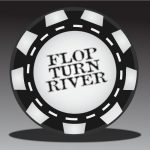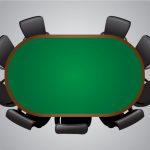FTR Quick Tip: Helping you plug leaks in 5 minutes or less.
Here, we look at ways to exploit your opponents who often fold to 3-bets. They know how to avoid paying off your monster hands — yet, by so doing, they open themselves up to other forms of exploitation. Use these ideas to get the best of it against frequent folders, and crush the other players at your no limit Hold’em cash game poker tables.
Discuss this video in our Poker Forum: [FTR Quick Tip 005] 3-Betting, Part 2: Polarization Forum Thread
Full Transcript
Hey, guys. This is Mike 1013 for Flop Turn River. In the last video, I talked about 3-betting for value, and there were a lot of spots where we couldn’t really 3-bet a wide value range because our opponent’s range to continue to the 3-bet was so narrow that a lot of our hands would be behind that range if we 3-bet them and if he continued to our 3-bet. That brings up a good possibility against those types of players who are folding so much of their range. That is, we cannot 3-bet them as a bluff. Now, let’s take a look at how often we think someone will need to fold to our 3-bet before we can really 3-bet them as a bluff. Here, I have an equation that the EV equals the % of times that he folds times the pot size, minus the % of times that he continues times our 3-bet size.
I put in some what I think are decent or good values for those numbers, and it works out that most of the time we need him to fold 70% in order to have a good 3-bet bluff against him. That changes a bit depending on the size of his open and the initial pot size and the size of your 3-bet, but I think 70% is a pretty good number there. However, this calculation ignores something very important, which is that you have post-flop equity even with your bluffs. You’re going to make a monster; sometimes, you’re just going to get lucky and make trips or two pair or you’ll see bet and he’ll fold the best hand. Realistically, I think a good number to use for villains full to 3-bet stat is 60%.
If he’s folding 60% of the time or more, I think it’s a good opportunity where you can consider 3-betting him as a bluff, so let’s take a look at some of the considerations that you’re going to want to bear in mind when you have a possibility of 3-bet bluffing. Blockers in your hand are important. For example, if you have some kind of bad ace like ace/six off, merely by having that ace in your hand you remove combinations that he can have, of hands that could continue to your 3-bet. When you have a six off, you remove his combinations of aces, of ace/king, of ace/queen from his hand. The second consideration, and this is very important, if you have the hand that plays well by cold calling, don’t use it to bluff because when you’re bluffing, you’re essentially taking hands that have zero equity because you would otherwise fold them and giving them equity by turning them into a profitable 3-bet bluff.
If your hand already has equity, enough equity such that you can cold call, you’re probably better off realizing that equity than turning it into a bluff. What kind of hands are good to 3-bet as a bluff? I think things like ace/four off, king/four suited, queen/jack off, they have some good blockers to the top of your opponent’s calling or for a betting range. Furthermore, they do have some good equity themselves, with ace/four off or king/four suited, you do have an over card to a large part of your opponent’s range and bad hands to 3-bet as a bluff are things like pocket nines or queen/jack suited that very often play fine for a cold call. There is no reason to waste that equity that you get by cold calling with them by 3-betting them as a bluff.
There is a large group of hands that can either be cold called or 3-betted as a bluff, depending upon your opponent’s tendencies, so things like ace/jack off, king/jack suited, ace/five suited – these hands may or may not fare well against your opponent’s opening range, just depending on position, depending upon your opponent’s tendencies. If you’re in a spot where you don’t feel good cold calling with hands like these, they’re pretty good candidates for 3-betting and turning them into a bluff. Essentially, against these players who fold to too many 3 bets, we’re going to be 3-betting a polarized range. That is, our range is going to be divided sharply into two parts. We’re going to have monsters like aces, kings, queens, and we’re going to have a lot of junkie kind of garbage hands, hands that are not really worth much.
What we’re not going to do is have medium strength hands in our 3-betting range because 3-betting medium strength hands against someone who only continues with very strong hands just wastes all the value that they have, and we’re not going to get good action from our medium strength hands by 3-betting them. Thanks for watching, guys. I think in the next video, I’m going to take a good at spots where a polarized 3-betting range is not very good, and so I’m going to talk a little bit about 3-betting a merged range, instead. Until then, see you guys later.


![[FTR Quick Tip 005] 3-Betting, Part 2: Polarization](https://flopturnriver.com/wp-content/uploads/2016/08/poker-videos.jpg)






